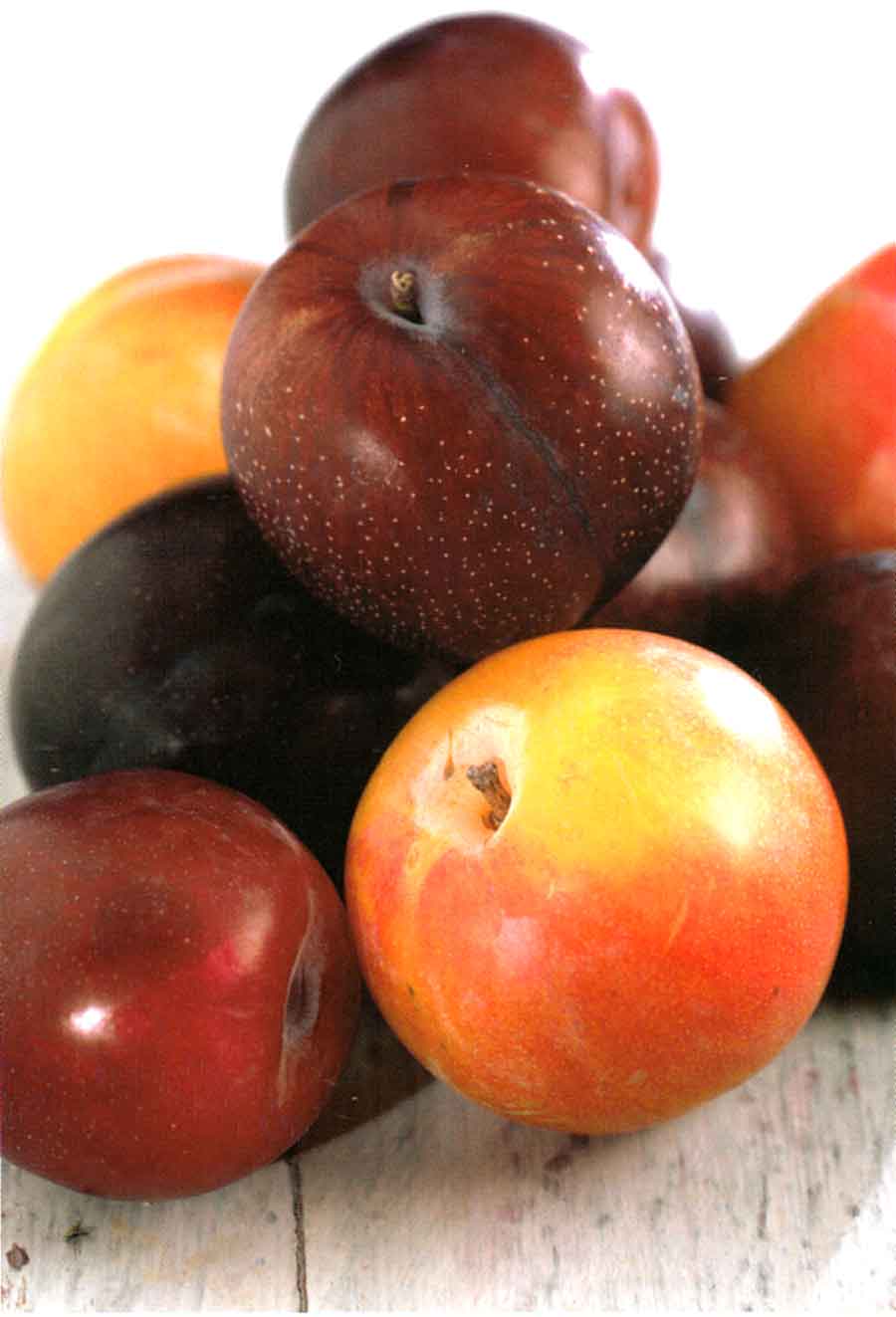Plums; belong to the prunus genus of plants, and are distant cousins of the peach, nectarine and almonds. There is nothing better than fresh, sun-ripened fruit – except, of course, a luscious dessert made from them. The vibrant colours of limes, cherries, peaches, and plums, among others, are lovely to look at – and even better to eat! Whether in a simple salad, or a festive flambé, whether served hot or chilled, fruit is the basis for an unlimited range of dinner finales.
How to Choose Plums
- Plums: Uniform in color with smooth skin and slightly soft flesh. Look for firm, plump, well-shaped fresh plums with good color for the variety. Press a plum gently; it should give slightly. The light gray cast on the skin is natural protection and doesn’t affect quality. Avoid overly soft, bruised, or exceptionally hard fruit.
Benefits of Plums
Plums, help the body absorb iron. They are a good source of fiber and are very high in two very important phytonutrients .
How to Store Plum
Store plums at room temperature to ripen, check frequently because they are extremely perishable. A ripe fruit will yield when pressed gently. To speed up the ripening process, place plums in a paper bag and store at room temperature, away from direct sunlight. Storing ripe plums in a plastic bag in the crisper drawer will prolong their eating life — they should keep for 3 to 5 days. Ripen plums at room temperature, then refrigerate them for up to 5 days.
How to Eat Plums
Cheese and Fruit Combinations: Serve semi-soft cheeses such as Morbier, Munster, Port-Salut, Gaperon, Doux de Montague, Tomme de Savoie, Raclette and Reblochon, with apricots, ripe red, yellow or purple plums, slices of ripe cantaloupe melon or, better still, slices of mango and papaya.
Cold Dessert: Strawberry Mousse with Fresh Plum Sauce: purple plum sauce makes a striking complement for strawberry mousse.
Tips and Notes
Once the plums are dried they become “prunes”.
Nutrients and Calories
These juicy and sweet fruits are high in vitamin C, and help the body absorb iron. They contain vitamins A, B2 and potassium. They are a good source of fiber and are very high in two very important phytonutrients: the chlorogenic and neochlorogenic acids, which have amazing antioxidant properties.
Best sources vitamin E are: avocados, hazelnuts, eggs, wheat germ, asparagus, peppers, tomatoes, blueberries, plums, peaches, currants, sunflower seeds, almonds, peanuts and, to a lesser extent, whole grains, beans and leafy greens.
BORON; is a trace mineral found in plums and prunes.
Plum nutrition facts: Calories: 34.5 kcal, Carbohydrate: 8.1 g, Protein: 0.5 g, Fat: 0.1 g, Fiber: 1.8 g

